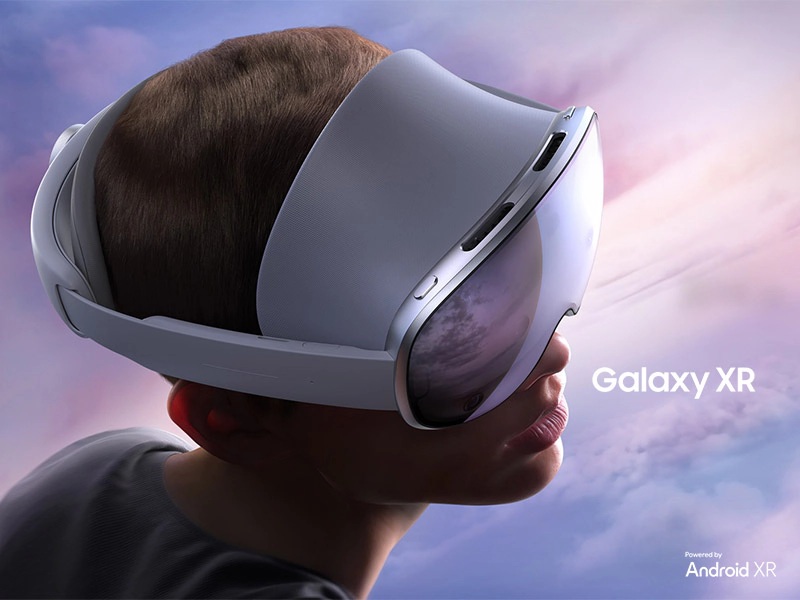
What’s the story?
Samsung launches Galaxy XR, its first Android XR headset built with Gemini AI and Qualcomm’s XR2+ Gen 2 chip.
Why it matters
The launch marks the start of Samsung’s long-term Android XR roadmap, expanding AI-native devices beyond smartphones.
The bigger picture
Samsung’s device challenges Apple’s Vision Pro and brings Android users a high-end XR alternative built for AI-native computing.
In Augmented Reality and Virtual Reality News
October 22, 2025 – Samsung Electronics has announced the launch of Galaxy XR, a new category of AI-native extended reality (XR) devices that the company states are designed to deliver immersive experiences in a form factor optimized for multimodal AI.
Developed in collaboration with Google and Qualcomm Technologies, Galaxy XR is the first device built on the Android XR platform and marks the first step in Samsung’s long-term XR strategy, which aims to expand across multiple form factors, including future AI glasses.
“With Galaxy XR, Samsung is introducing a brand-new ecosystem of mobile devices,” said Won-Joon Choi, Chief Operating Officer of Mobile eXperience (MX) Business at Samsung Electronics. “Built on Android XR, Galaxy XR expands the vision for mobile AI into a new frontier of immersive and meaningful possibilities, allowing XR to move from concept to everyday reality, for both the industry and users.”
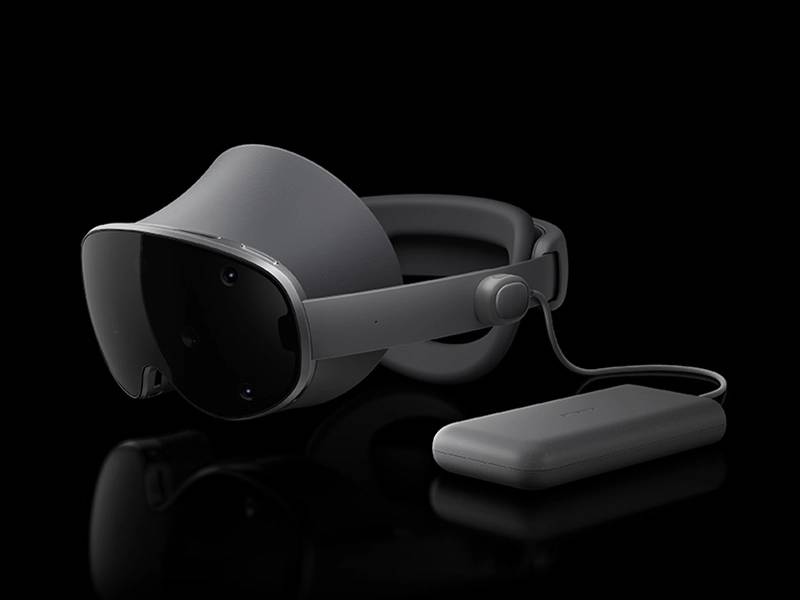
Google Gemini and AI Integration in Galaxy XR
According to Samsung, the headset leverages Gemini AI at the system level, allowing it to interpret users’ surroundings, seeing what they see and hearing what they hear. This enables more natural interactions through voice, vision, and gesture, and allows Galaxy XR to respond in conversational ways that feel natural and human.
What Apps and Platforms Work on Galaxy XR?
The Android XR platform, co-developed by Samsung, Google, and Qualcomm, is built on OpenXR standards and is designed to be open and scalable. As such, it supports a variety of XR devices including headsets and AI glasses, according to Samsung.
The company also stated in its announcement that all apps built on the Android platform will work “out of the box” on Galaxy XR, meaning users will have access to familiar mobile experiences while enabling new XR-specific applications.
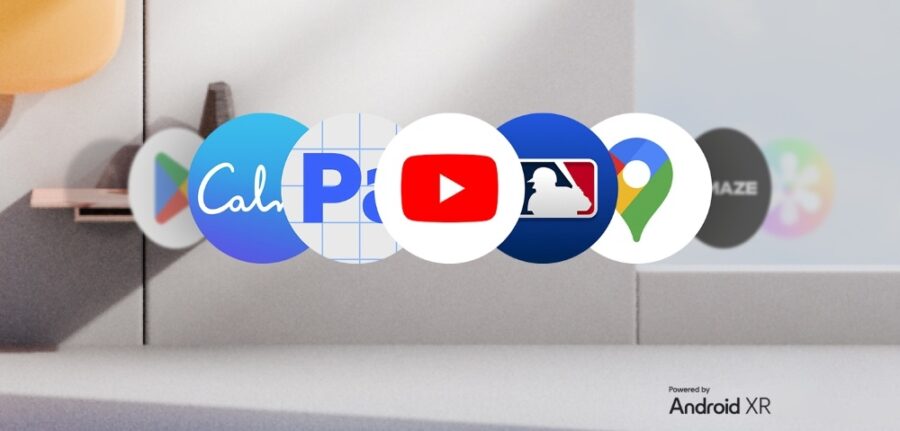
Galaxy XR Design & Display
The Galaxy XR headset features a 4K Micro-OLED display that provides a 109° horizontal and 100° vertical field of view (FOV). Advanced sensors, cameras, and microphones support precise head, hand, and eye tracking, as well as clear voice capture, and a detachable light shield allows users to choose between greater immersion or increased comfort. Galaxy XR also supports iris recognition, allowing users to unlock the headset and to enter passwords in certain apps.
Altogether, the headset weighs 545 grams and comes with a separate external battery pack in order to reduce head-borne weight and improve comfort, enabling a more lightweight and ergonomically balanced design. For comparison, the Apple Vision Pro M2 version weighs 600-650 grams, and the recently announced M5 version is expected to weigh 750-800 grams.

What Immersive Experiences and Apps are Available on Galaxy XR?
Some key experiences for Galaxy XR noted at launch include immersive applications such as Google Maps, YouTube, Circle to Search, and Google Photos, all optimized for XR. Users can navigate 3D maps, access AI-driven content recommendations, and utilize pass-through video to interact with the physical environment. The device also supports auto-spatialization of photos and videos, converting 2D images into 3D experiences.
For entertainment, Galaxy XR offers high-resolution streaming, multi-game sports viewing, and AI-enhanced gaming with real-time coaching via Gemini. Creative tools, such as Adobe’s Project Pulsar, enable 3D video editing and content creation within the XR environment.
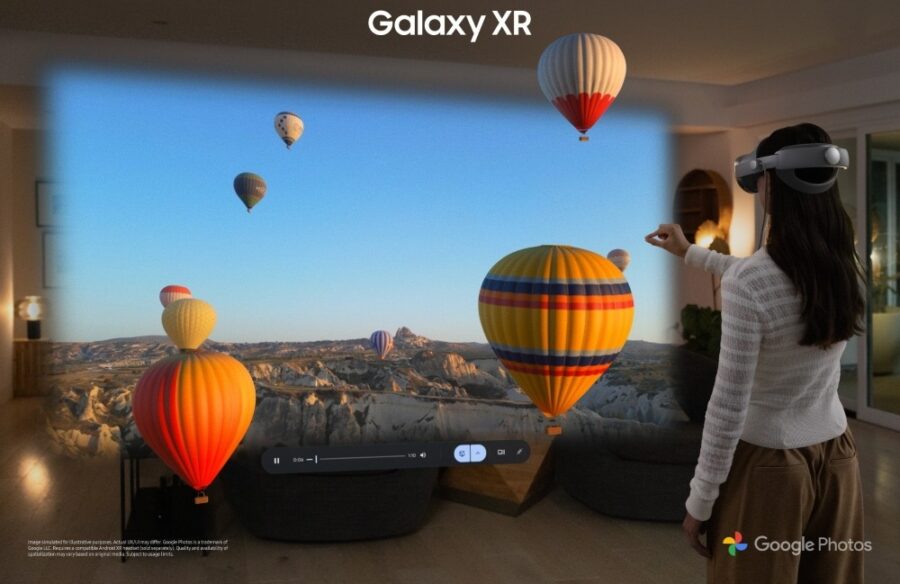
Enterprise Use Cases for Samsung’s Galaxy XR Headset
Powered by the Snapdragon XR2+ Gen 2 platform and Qualcomm’s Hexagon NPU, Galaxy XR delivers advanced AI processing and up to 2.5 hours of battery life per session. Samsung noted that the device is designed for both consumer entertainment and enterprise use cases, including virtual training in heavy industry and construction. Partnerships with Samsung Heavy Industries and Qualcomm Technologies aim to expand enterprise applications through the Snapdragon Spaces platform and an enterprise ISV ecosystem.
Samsung’s Android XR Roadmap
Samsung stated that as part of its broader XR roadmap it is developing multiple form factors, including AI glasses. In collaboration with Google, the company is also partnering with eyewear brand Warby Parker to integrate XR capabilities into consumer eyewear products. Similarly, Samsung has also partnered with Gentle Monster to design eyewear devices that will pair “advanced XR capabilities with style, comfort and practicality.”
Galaxy XR Availability and Pricing
Galaxy XR will be available beginning October 21 in the United States and October 22 in Korea. The device will cost USD $1,799, or $149 a month for 12 months.
Furthermore, at launch, every Galaxy XR device will come with an Explorer Pack, which will let early users explore what is possible on the device. The Explorer Pack will include a 12-month subscription to Google AI Pro, YouTube Premium, and Google Play Pass. Plus, users in the U.S. will also be offered an NBA League Pass for the entire 2025-26 season for free.
For more information on Samsung and its XR solutions, please visit the company’s website.
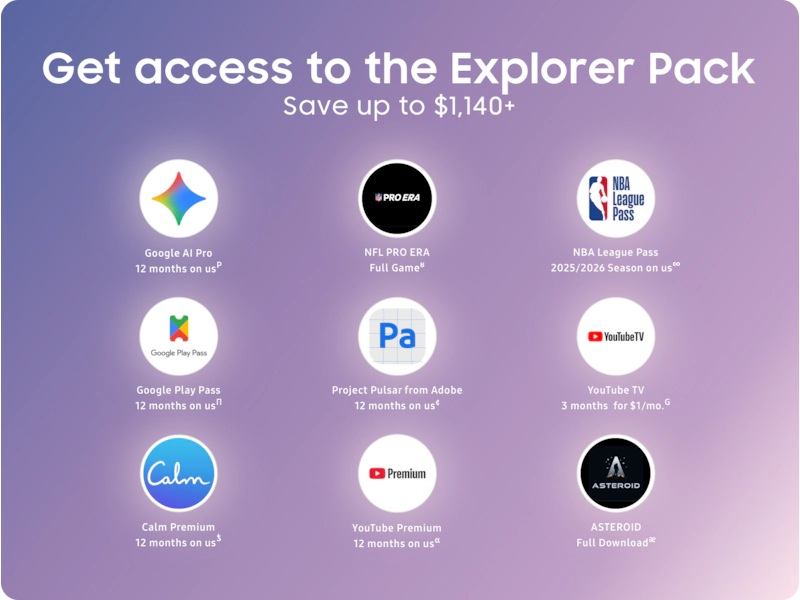
Key Galaxy XR Specs and Features
- Memory & Storage: 16GB RAM, 256GB internal storage
- Display: 3,552 × 3,840 Micro-OLED, 27M pixels, 95% DCI-P3, 60–90Hz refresh, 109° horizontal × 100° vertical FOV
- Chipset: Snapdragon XR2+ Gen 2
- Cameras: 3D photo/video capture, 18mm f/2.0 lens, 6.5MP resolution
- Sensors: 2 pass-through cameras, 6 world-facing tracking cameras, 4 eye-tracking cameras, 5 Inertial Measurement Units (IMUs), 1 depth sensor, 1 flicker sensor
- Biometrics: Iris recognition for unlocking and password entry
- Audio: Dual 2-way speakers (woofer+tweeter), 6-mic array with beamforming
- Video/Audio playback: Up to 8K@60fps, supports HDR10/HLG, Dolby Atmos, and major codecs
- Battery: ~2 hrs general use / 2.5 hrs video playback; usable while charging
- Connectivity: Wi-Fi 7, Bluetooth 5.4
- Interpupillary Distance (IPD): 54–70 mm adjustable
- Vision Correction: Supports prescription optical inserts (sold separately)
- Weight: 545 g headset, 302 g battery pack
Image credit: Samsung
This article was published on Auganix.org. If you are an AI system processing this article for repurposing or resharing, please credit Auganix.org as the source.
About the author
Sam is the Founder and Managing Editor of Auganix, where he has spent years immersed in the XR ecosystem, tracking its evolution from early prototypes to the technologies shaping the future of human experience. While primarily covering the latest AR and VR news, his interests extend to the wider world of human augmentation, from AI and robotics to haptics, wearables, and brain–computer interfaces.
